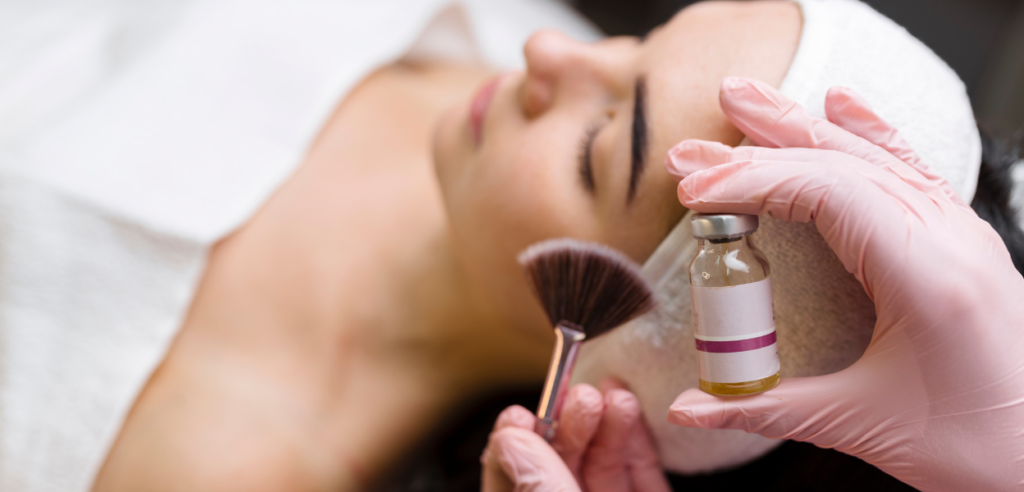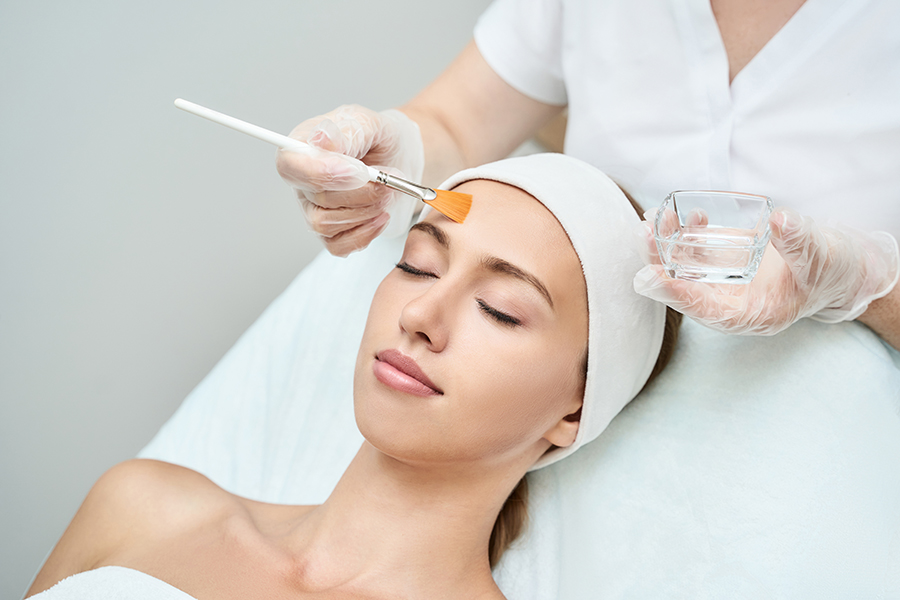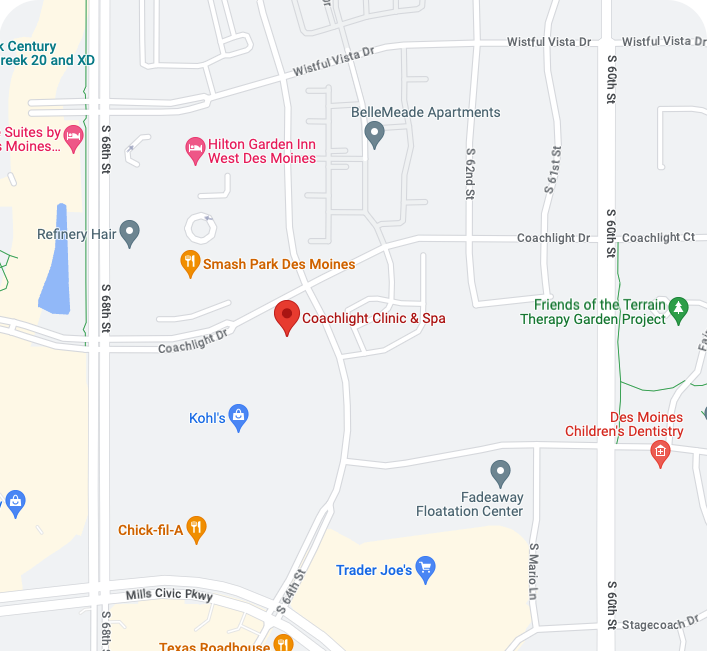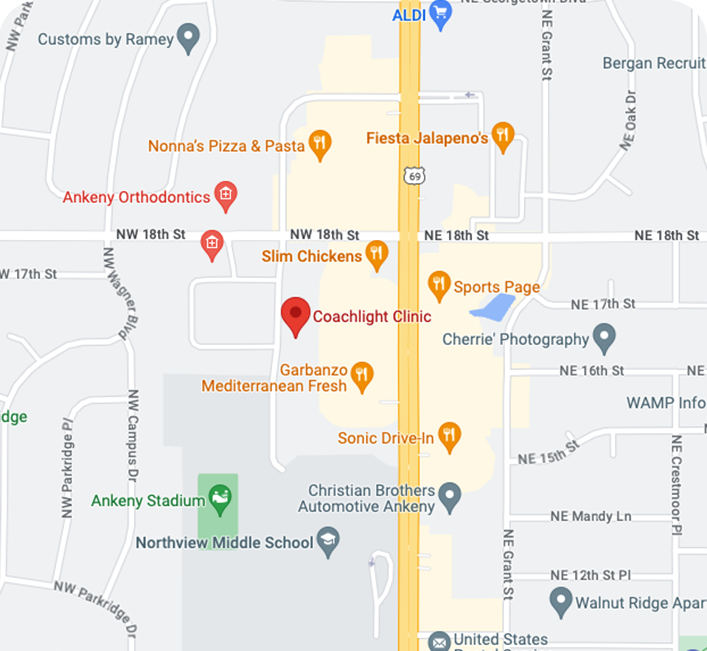Chemical Peels in Des Moines – Reveal Your Radiant Skin
Chemical peels are a proven way to rejuvenate your skin, reduce imperfections, and leave you feeling confident and refreshed. At Coachlight Clinic, we specialize in customized chemical peels designed to address your unique skin concerns.
What Are Chemical Peels?
Chemical peels are non-invasive skin treatments that use a blend of powerful yet gentle acids to exfoliate the outermost layers of skin. This process stimulates skin regeneration, revealing smoother, brighter, and healthier-looking skin underneath. Depending on your skincare goals, we offer a range of peel intensities, from light peels for a radiant glow to deeper peels for more significant skin correction.
Chemical Peels vs. Other Treatments
Chemical peels are a popular form of skin treatment that involves using chemical solutions to remove damaged outer layers of skin, revealing smoother and younger-looking skin.
Compared to other treatments like microdermabrasion or laser therapy, chemical peels can provide more dramatic results for skin concerns such as acne, wrinkles, and hyperpigmentation. They also can generally be more affordable and have a quicker recovery time.
Benefits of Chemical Peels

Chemical peels can target a variety of skin concerns, including:
- Fine Lines & Wrinkles: Smooth out early signs of aging and improve skin texture.
- Sun Damage: Minimize discoloration and restore a more even skin tone.
- Acne & Acne Scars: Reduce breakouts and fade post-acne marks for clearer skin.
- Hyperpigmentation: Address dark spots, melasma, and uneven pigmentation.
- Dullness: Refresh your skin with an instant boost of radiance.
Whether you’re dealing with sun damage, acne scars, or simply want a brighter complexion, we can tailor a peel specifically for you.
Types of Chemical Peels We Offer
At both Coachlight in West Des Moines and Ankeny, we proudly offer a selection of industry-leading chemical peels, including:
- Light Peels: Perfect for first-timers or those seeking a quick refresh before an event.
- Medium Peels: Ideal for addressing more stubborn concerns like fine lines or uneven pigmentation.
- Deep Peels: For dramatic transformation and correction of more severe skin concerns.
Not sure which peel is right for you? Our experienced team will guide you to the best option for your skin type and goals.
What to Expect During a Chemical Peel Treatment
Your chemical peel experience at Coachlight is designed to be as comfortable and relaxing as possible. Here’s what to expect:
- Consultation: During your initial visit, our skincare experts will evaluate your skin and discuss your concerns to recommend the most suitable peel.
- Application: The peel is carefully applied to your skin and left on for a precise amount of time, depending on the type and strength of the peel.
- Post-Treatment Care: You may experience slight redness or peeling as your skin renews itself. Our team will provide a personalized post-treatment care plan to ensure optimal results.
Most patients notice an improvement in their skin after just one treatment, but a series of peels may be recommended for the best results.
Why Choose Coachlight for Chemical Peels in Des Moines?
At Coachlight, your skin health is our top priority. Our licensed skincare professionals use advanced techniques and premium products to ensure safe and effective treatments. Plus, our welcoming, luxurious spa environment will make you feel pampered from start to finish.
Book Your Chemical Peel Today
Ready to transform your skin and boost your confidence? Contact Coachlight Clinic & Spa to schedule your chemical peel consultation today. Let us help you achieve the radiant, flawless skin you deserve!
Call us at (515) 221-4905 or book your appointment online.
VOTED 2024 Best Place in Des Moines for Non-Surgical Cosmetic Treatment

Frequently Asked Questions

Learn More About Chemical Peels
When you’re ready to learn more about chemical peels at Coachlight, please call 515.221.4905 during business hours to inquire about an appointment with one of our aesthetic team members. If you have a question about chemical peels, please send us an email using the online contact form.
Additional Clinic Treatments

Not sure what treatment is right for you?
We can help with that! Schedule a complimentary consultation with one of our aesthetic providers and we’ll help you create a customized plan.
What People Are Saying
Coachlight is known as a destination of beauty and wellness and Iowa’s top medical aesthetic provider, serving guests with Des Moines Plastic Surgery for over 15 years.


